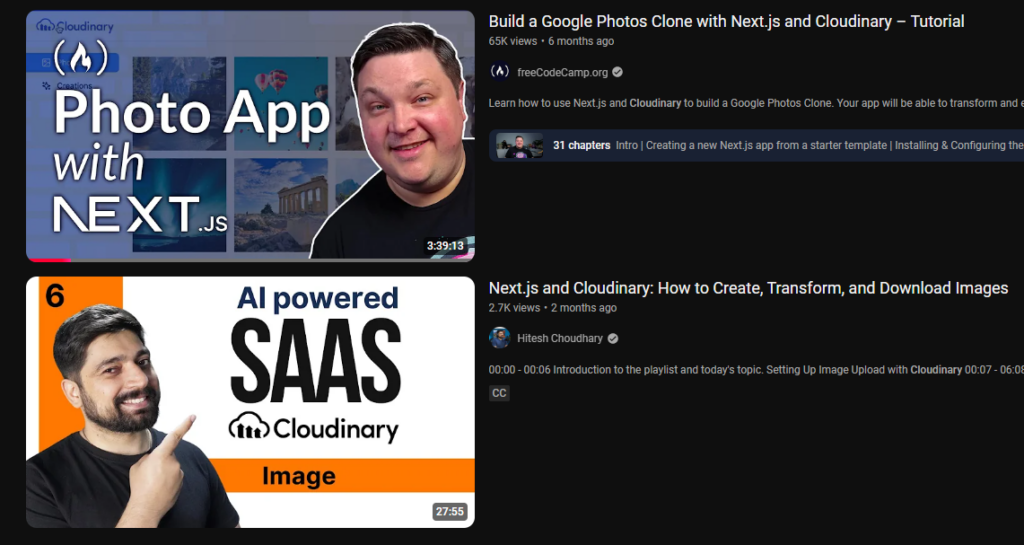Cloudinary is an API-first image and video manipulation service. It takes images and videos and resizes or crops them, for portrait or landscape say, or makes AI-based edits. While not perhaps as well known a name as an API-driven business as Stripe or Twilio, it has built a successful business at scale by appealing to developers. The customer list is shiny – enterprise companies like Puma, FC Bayern Munich, Guess, Levi’s, Paul Smith, Puma and Rapha. But it also has more than 10,000 self-service developer customers.
Cloudinary took 9 years to reach 1M developers, another 3 years to double that, and now plans to reach 5M active developers within the next few years. Given there are – by most estimates – fewer than 30M developers in the world that’s a big target. But with a global strategy, and global growth in developer populations, not unreasonable.
I recently talked to Sanjay Sarathy, who runs both developer engagement and product led growth at Cloudinary, and one of the aspects of the company’s community building strategy that struck me was that it relies primarily on video – in particular on YouTube tutorials – to drive devs to its properties.
Before settling on YouTube as a primary target it set out a model to measure the value of all developer interactions. Dev Rel worked with the finance department, considering the lifetime value of a registration, with the understanding that while the majority of users wouldn’t become paying customers, that didn’t mean they weren’t valuable. From there Cloudinary built a model attributing a particular value to all activities that involved developer touch – articles, events, blog posts, YouTube, etc, in order to map out a lifetime value of a registration. It quickly became apparent that YouTube was delivering the most engaged traffic. In a Cloudinary survey this summer YouTube came out a clear winner in terms of how people had first heard of the company.
And now it’s driving 45,000 new registrations per month.
Cloudinary was founded by three developers, and so their ethos was, how, how can we build a company that focused on people like ourselves? How would we want to engage with a company like Cloudinary? And so the focus was very much around creating content, creating code, creating samples that would allow developers to understand the power of our image and video platform, and we did this in the early days through a variety of channels. We had our own blog channel on our website. We participated in hackathons, we spoke at conferences. They’re all the usual, nothing hugely surprising, but I think one of the things that we’ve noticed over the years is sort of the secular trend towards YouTube as an incredible search engine in and of itself, and I think how developers like to learn by finding other developers who are building in public and showing how you can build in very specific ecosystems that map to their interests, and we started to get inbound interest from people that said, yeah, it would be great if you could show us how to do XYZ, and it wasn’t one of those things where they were going to come to our site and read a blog post. They wanted something that was a little more interactive and a little more engaging, so they could see the code being built in real-time.
A couple of strategy points are worth calling out.
Firstly, while the original intention was to create short two to three minute tutorials, it turns out that longer videos, some even lasting two or three hours, were also popular. This is counter-intuitive, do people really watch three hour videos? But of course people will watch Twitch streamers coding for hours, if they’re engaging and building something interesting. So the idea that shorter is always better isn’t always the case with in-depth tutorials.Also – video can of course be asynchronous.
What we what we learned is that if the conversation is around how to do X, and it’s in steps, and you don’t have to do everything at once, and you can come back and you show the code in real time, and you give people access to the GitHub repo, so even if they don’t watch the full video, They can clone it and start working playing on their own, and come back to see the steps… that can be quite engaging.”
Secondly, Cloudinary quickly realised that it wasn’t going to be able to do everything in house. Certainly not with the required technical depth, given the range of languages and frameworks it wanted to support. So while it has some excellent inhouse video creators it also works with third party developers on sponsored video tutorials, to create interesting, on point content for developers in specific ecosystems. JavaScript is of course the key front end language, but more specifically frameworks such as Next, Nuxt, Vue, and React. Python is the main back end target, on the server side, although Java and C# are also targets.
A good example of third party sponsored content is Paul Charlton of WPTuts demonstrating how to use Cloudinary with WordPress.
The company has a free tier and self-service subscriptions, but also does direct enterprise sales. A significant percentage of them originally signed up for self-service subs.
Finally a note on going global. At the most of Cloudinary’s sponsored content is in English, but that’s going to change. There are huge developer populations in India, Brazil, China, and so on, which is going to mean local language support, for example in Hindi, which is just coming onstream.
If you’d like to know more about Cloudinary and how its building its business you should check out this video I recorded with Sanjay. There are a lot of useful nuggets in there.
Cloudinary, Stripe and Twilio are not RedMonk clients. This RedMonk video and blog post were not sponsored.

No Comments